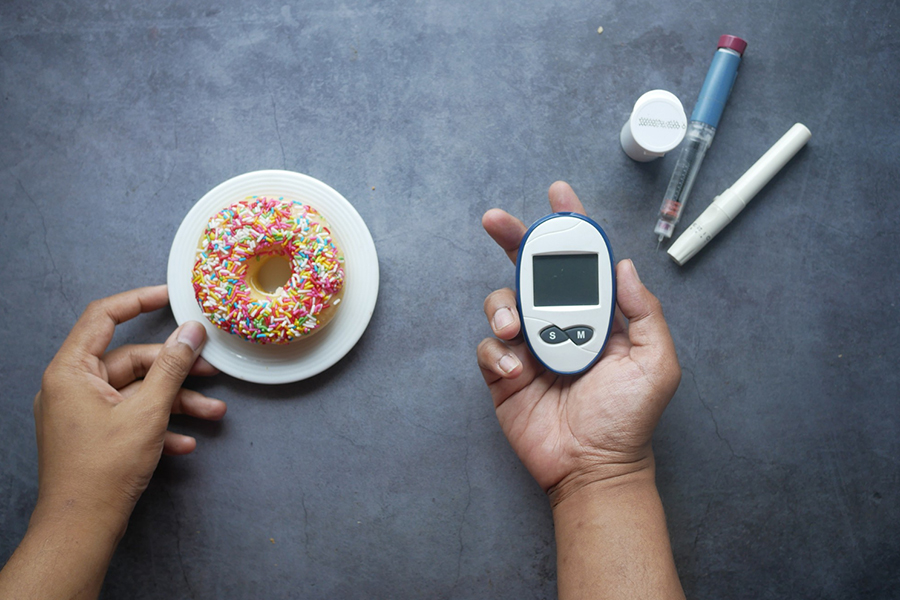August 13 ,2025
Health
August 13 ,2025

1.Introduction
2.What is Insulin Resistance?
3.Causes Of Insulin Resistance
4.Symptoms Of Insulin Resistance
5.How To Contol Insulin Resistance Through Healthy Diet?
6.Conclusion
Insulin plays a pivotal role in the onset of type 2 diabetes by regulating blood sugar levels through a complex mechanism. A condition associated with this hormone is Insulin Resistance, in which the body’s response to insulin gets affected. Through this blog we will explore the origins, effects, and most importantly, how to manage Insulin Resistance through a balanced diet.
Symptoms of insulin resistance include an inability to absorb glucose from the bloodstream by muscles, fat, and liver cells. Thus, the pancreas produce more insulin, allowing glucose to enter cells more easily. If the pancreas can compensate for cells’ reduced sensitivity to insulin, blood glucose levels remain stable within a healthy range.
Researchers believe that excessive weight and a sedentary lifestyle are major factors contributing to insulin resistance. Excess weight, especially visceral fat around organs, drives insulin resistance, indicated by waist measurements of 40 inches or more for men and 35 inches or more for women, even with a normal BMI. Abdominal fat produces inflammatory substances, worsening insulin resistance, type 2 diabetes, and cardiovascular issues, potentially leading to fatty liver disease.
Initially, if you have insulin resistance and your pancreas can ramp up insulin production adequately to maintain normal blood sugar levels, you may not experience any symptoms. However, over time, insulin resistance can progress, leading to pancreatic cells becoming exhausted and unable to produce enough insulin to overcome the resistance. This results in elevated blood sugar levels (hyperglycemia), causing noticeable symptoms such as increased thirst, frequent urination, heightened hunger, blurred vision, headaches, vaginal and skin infections, and slow wound healing.
Improving insulin resistance is critical to general well-being. A well-balanced diet can help you achieve this. Aside from emphasising sleep, exercise, and stress management through meditation or yoga. Losing excess weight, particularly around the midsection, improves insulin sensitivity and reduces diabetes risk. But most importantly, one should follow a nutritious nutrition regimen. You can choose nutrient-dense foods. Making intelligent food choices to enhance insulin sensitivity, such as eating soluble fiber-rich foods such as oats, legumes, and fruits, which aid in blood sugar regulation.One should minimise additional sugars in their diet because they can contribute to insulin resistance. Lean protein should be emphasised by including poultry, fish, tofu, and lentils. To improve insulin sensitivity, you should limit your carbohydrate consumption and prioritise whole grains and complex carbohydrates over processed grains and sugary meals.
Dietary choices are vital for understanding and controlling insulin resistance. Weight management, exercise, and stress reduction are all important, but a well-balanced diet comes first. Individuals can effectively improve insulin sensitivity by focusing on nutrient-dense diets, reducing added sugars, prioritising lean proteins, and regulating carbohydrate intake. This multifaceted approach not only reduces the risk of diabetes of any kind but also promotes general health and energy. Remember that your eating decisions today can influence a healthy tomorrow.